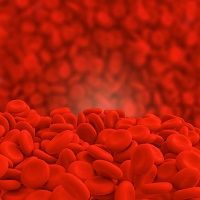Article
Is rFVIIIFc Really Safe for Long-Term Use in Adults and Adolescents with Severe Hemophilia?
Author(s):
Two studies have already shown that a hemophilia treatment option is safe and effective, but researchers from the United Kingdom took an in-depth look to confirm these outcomes.

Two studies have already shown that a hemophilia treatment option is safe and effective, but researchers from the United Kingdom took an in-depth look to confirm these outcomes.
Prophylaxis with replacement factor VIII (FVIII) is the standard care for those with hemophilia A. Since this method requires infusions three to four times per week, an extended half-life version was created, recombinant factor VIII Fc fusion protein (rFVIIIFc). The team analyzed the phase three A-LONG study and ongoing ASPIRE extension study, which have already evaluated the medication, and detailed their findings in a poster session at the 57th American Society of Hematology Annual Meeting (ASH 2015) in Orlando, Florida.
The A-LONG study consisted of 165 males (at least 12 years of age) who had been previously treated for hemophilia A. The majority of patients (118) had one treatment arm in pre-study prophylactic or episodic treatment of rFVIIIFc — day one: 25 IU/kg, day four: 50 IU/kg to start followed by 25 to 65 IT/kg every three to five days to keep levels between one and 3 IU/dL or higher if necessary. Twenty four patients also had two treatment arms for weekly prophylaxis of 65 IU/kg of rFVIIIFc and 23 patients had three treatment arms for episodic (on-demand) treatment of 10 to 50 IU/kg of rFVIIIFc as needed.
- MD Magazine is on Facebook, Twitter, Instagram, and LinkedIn!
Next up for assessment was the ASPIRE extension study (interim ASPIRE results are already published) which included 167 patients on one of four treatment regimens. The median duration of treatment, regardless of which one of the four, was around 25 months.
- Individualized prophylaxis: 25 to 65 IU/kg of rFVIIIFc every three to five days, or twice per week of rFVIIIFc (day one: 20 to 65 IU/kg, day four: 40 to 65 IU/kg)
- Weekly prophylaxis: 65 IU/kg of rFVIIIFc every seven days
- Modified prophylaxis: Personalized dosage for patients who did not reach optimal prophylaxis on individualized or weekly prophylaxis
- Episodic prophylaxis: rFVIIIFc dosage based on type and bleeding risk severity
After evaluating the studies, the British researchers found that rFVIIIFc were well-tolerated for the most part and the majority of adverse effects were considered mild. In the APIRE study, the top three most common adverse effects were cold (22.6%, 37 patients), joint pain (14.6 %, 24 patients), and headache (20.2%, 20 patients).
“There were no reports of anaphylaxis, serious hypersensitivity events, or serious vascular thrombotic events,” the authors noted.
As far as efficacy goes, rFVIIIFc resolved 89.1% of bleeding episodes with just one infusion among all of participants in both studies and 97.3% with two infusions.
“Longitudinal data from A-LONG and ASPIRE studies confirmed the long-term safety of rFVIIIFc in adults and adolescents with severe hemophilia A,” the team verified.
What to Read Next >>> More from the ASH 2015 Annual Meeting




